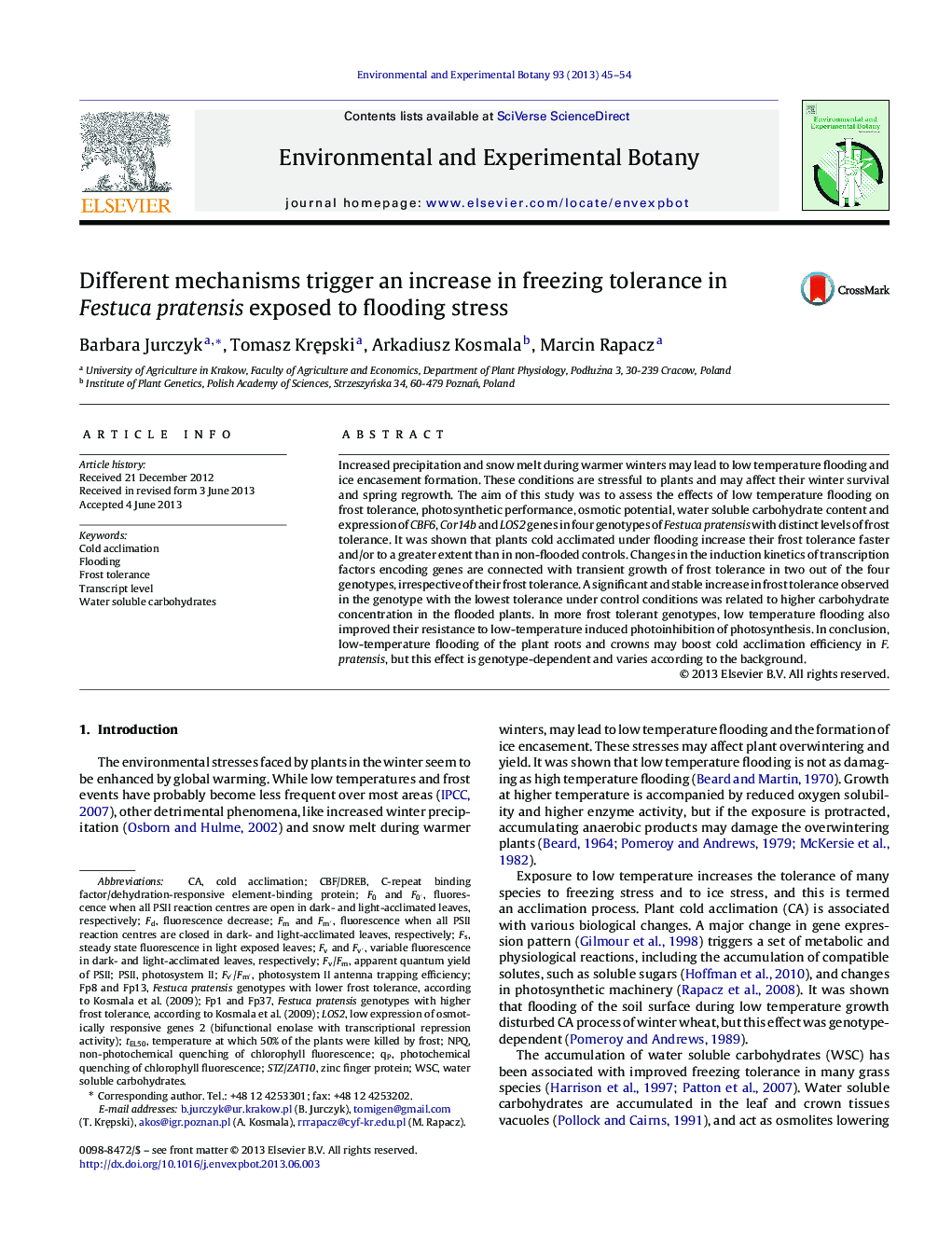| Article ID | Journal | Published Year | Pages | File Type |
|---|---|---|---|---|
| 6388952 | Environmental and Experimental Botany | 2013 | 10 Pages |
â¢Frost tolerance of Festuca pratensis was improved under low temperature flooding.â¢Higher carbohydrate concentration may trigger stable frost tolerance increases.â¢Changes in gene expression was related to transient frost tolerance increases.â¢In more frost tolerant genotypes flooding increases photoinhibition resistance.
Increased precipitation and snow melt during warmer winters may lead to low temperature flooding and ice encasement formation. These conditions are stressful to plants and may affect their winter survival and spring regrowth. The aim of this study was to assess the effects of low temperature flooding on frost tolerance, photosynthetic performance, osmotic potential, water soluble carbohydrate content and expression of CBF6, Cor14b and LOS2 genes in four genotypes of Festuca pratensis with distinct levels of frost tolerance. It was shown that plants cold acclimated under flooding increase their frost tolerance faster and/or to a greater extent than in non-flooded controls. Changes in the induction kinetics of transcription factors encoding genes are connected with transient growth of frost tolerance in two out of the four genotypes, irrespective of their frost tolerance. A significant and stable increase in frost tolerance observed in the genotype with the lowest tolerance under control conditions was related to higher carbohydrate concentration in the flooded plants. In more frost tolerant genotypes, low temperature flooding also improved their resistance to low-temperature induced photoinhibition of photosynthesis. In conclusion, low-temperature flooding of the plant roots and crowns may boost cold acclimation efficiency in F. pratensis, but this effect is genotype-dependent and varies according to the background.
